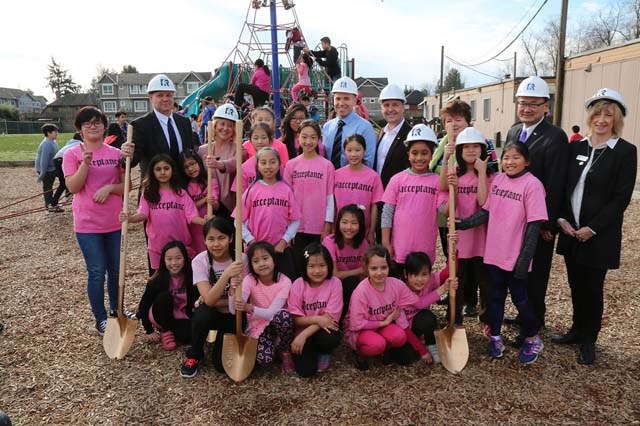If you thought everyone would be happy about a desperately needed $5 million extension to one of Richmond’s most crowded elementary schools, think again.
The B.C. government’s Minister of Education, Mike Bernier, rolled into town Friday to announce a jointly funded, eight-classroom addition to Anderson elementary on Alberta Road, near No. 4 Road and Granville Avenue.
Students are currently overflowing into portable classrooms, with enrolment at 523 — the school’s capacity is 401.
Work on the $5 million extension, half of which is being paid by Richmond School District, is expected to start this spring and take a year to complete — boosting the school’s capacity to 625 student spaces.
However, some teachers at the school have serious concerns over the type of classroom space planned and the fact that the gym and computer lab space is already bursting at the seams. So much so, that students are only getting one gym session per week.
“(The extension) solves the problems of the portables on site, but adds no new space which is desperately needed; like gym space and computer lab space, to accommodate such a large school population,” one teacher, who asked not to be named, told the Richmond News.
“The gym capacity, for instance, in an age when we need kids active, is a huge problem, (as is the) lack of access to technology.”
The Richmond Teachers’ Association (RTA) is well aware of its members’ issues at Anderson and has been in talks with the school district.
In particular, there are worries about the proposed new classrooms being designed to open out into hallways to accommodate larger classes.
“We would agree that teaching spaces need to be flexible, but we have concerns with classes spilling out into the hallways,” said Al Klassen, RTA president.
“Yes, there are times when students are split into groups and sometimes they work in the hallway as part of that.
“But the RTA’s point is that the room should be maximized in terms of teaching space. The trend right now is to make the classrooms smaller and that’s an issue.”
Klassen said he’s also aware of the crush on gym time at Anderson, which is “already chock-a-block.”
“Putting in another addition to the school is problematic without having more gym and computer lab space,” added Klassen.
“We are working with the school district to try and resolve (these issues).”
Debbie Tablotney, Richmond School Board chair, said the district is looking at the extension as an “opportunity to build space for the future.”
“(District) staff have met with the teachers and are in talks about (their concerns),” Tablotney told The News.
In terms of the configuration of the classroom spaces, Tablotney said some changes may be possible and it was “important to note…that the plans have yet to be finalized.”
“But we won’t be making any additions to the gym space. In terms of the funding from the Ministry, you can only do so much.
“As far as the (computer lab) is concerned, who knows? It might be (improved) as part of the $5 million.”
As well as the classroom additions, there will be revisions to the parking lot and drop-off area, updates to building maintenance systems and improvements to sidewalks, landscaping, perimeter drains and water mains.
“With continued growth expected in Richmond, I know how important this renovation is to the community,” Bernier said in a released statement.
“Our partnership with the school district will enhance the school and give students the foundation to succeed in today’s changing world.”
In the same release, Tablotney, said, “As the City of Richmond continues to grow and the demographics of our community start to shift, we need to address the condition and capacity limitations of our schools.”



